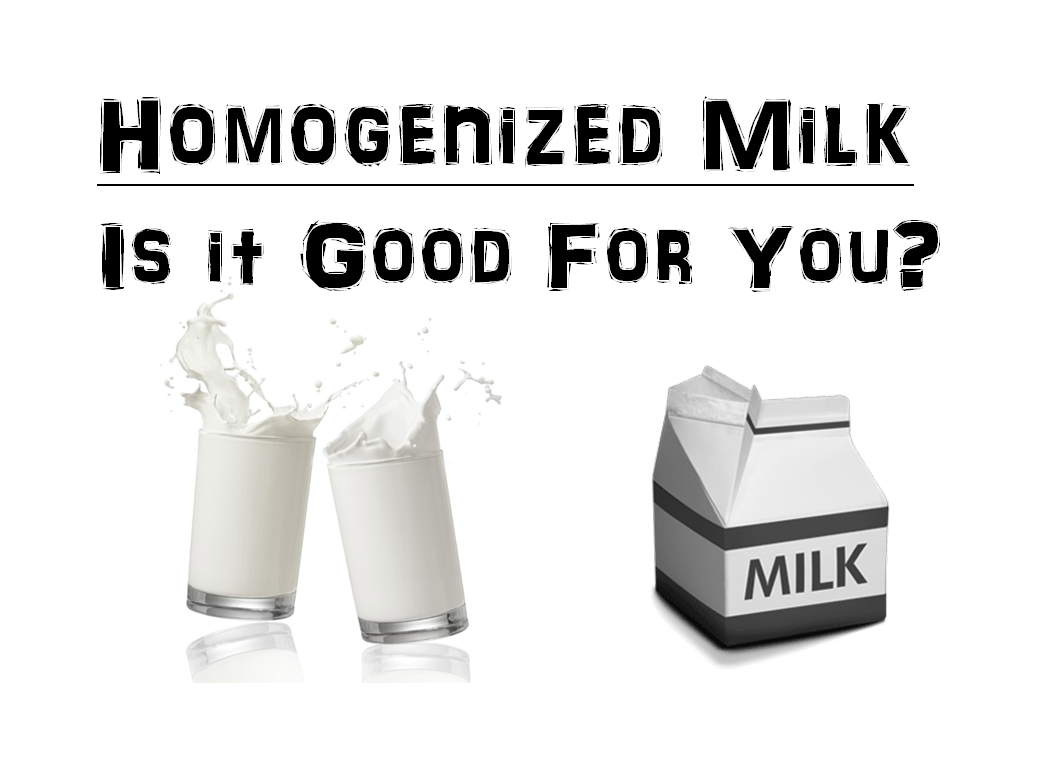
Homogenization is one of the processes milk goes through before it’s sold. If you’ve ever wondered about what exactly homogenization is, why it was invented, and if it’s good for you or not, this post will explain all these questions
What is Homogenization?
Most milk in stores today has been homogenized and pasteurized. The 2 processes are different, and have different purposes though – so don’t get them confused. Let me explain what homogenization is:
Because milk is an oil/ water emulsion, it has properties that make it a very unique beverage. Oil and water don’t mix. So the goal of homogenization is to get the milk fat to be more evenly spread throughout the milk.
According to Wikipedia:
Homogenization is the process of converting a mixture of two mutually non-soluble liquids the same throughout and into an emulsion (an emulsion is a type of colloid, which is a substance microscopically dispersed throughout another substance. (The prefix homo- coming from the Greek, meaning the same.) – Wikipedia
In simpler terms, homogenization is the process that milk goes through to get the cream to be evenly spread throughout all of the milk. Without homogenization, the cream floats to the top.
So if you have a glass of raw milk, and set it down for a few minutes, the cream will float to the top, and you end up with a really creamy sip if you don’t stir it. If your milk’s been homogenized, the cream stays evenly dispersed throughout the milk.
The main goal of homogenization is to make sure that you have consistent tasting milk. It makes your milk homogeneous with an even amount of milkfat in each sip. Homogenization can also give the milk a longer shelf life by preventing the cream from clumping together.
**Homogenization helps to stop the cream from floating from the top. It gives you a consistent amount of creamy goodness with every sip** (Source)
How Homogenization Works
Interestingly enough, homogenization is a fairly old process. Homogenization was invented in 1899, around the same time as pasteurization (1895). Auguste Gaulin, a Frenchman, obtained the first patent for a machine to homogenize milk. The patent consisted of a 3 piston pump in which product was forced through one or more hair like tubes under pressure.
When the milk is homogenized it is pushed through a small valve at a high pressure to break up the fat globules (droplets). Since large milk fat droplets are lower density, they float to the top. When they go through the homogenization process, they are broken down in to smaller droplets that remain evenly dispersed through the milk.
**In the homogenization process, milk flows through a valve at high pressure to break the fat into smaller droplets**
Is it Good for You?
There is no scientific evidence to suggest that homogenization of milk has any negative affect on health. Homogenization is regarded as a safe process that does not cause any problems in digesting milk. In fact, research is showing that homogenization may actually have some health benefits by making milk fat more digestible.
Increased digestion of milk fat is huge. Milk fat helps your body absorb fat soluble vitamins like Vitamin A, and is also a great source of DHA, an omega-3 fatty acid which is a primary structural component of the human brain. The fat in milk helps your body absorb more of the nutrients in milk.
When it comes to fat size, smaller droplets are easier for the body to digest. Smaller droplets of fat have more surface area for digestive enzymes (like lipase) to work and break them down. The enzyme lipase is more effective in breaking down the smaller fat globules when milk is homogenized. Science is showing that homogenization actually enhances your body’s ability to digest milk. (source) (source)
Let me know
In summary, homogenization is a simple process that helps standardize milk and make it a consistently great tasting product. With homogenization, you don’t have the nuisance of having to shake or stir your milk every time you drink it. The great news is that homogenization actually helps your body absorb the milk fat better, and I think that is some very interesting Moos (news).
Just let me know if you have further questions, and what you think. I’d love to hear your thoughts
Sources:
http://pubs.acs.org/doi/abs/10.1021/nn405123j
http://milkgenomics.org/article/milk-fat-built-digestion/
http://www.sciencedirect.com/science/article/pii/S0924224406000550
http://web.utk.edu/~fede/high%20pressure%20homogenization.html








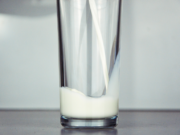







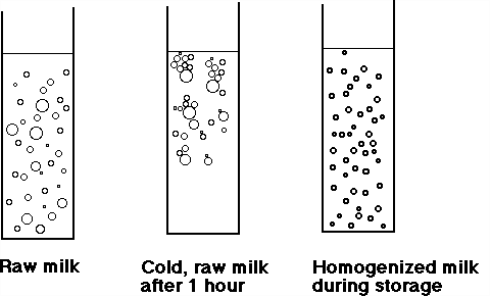
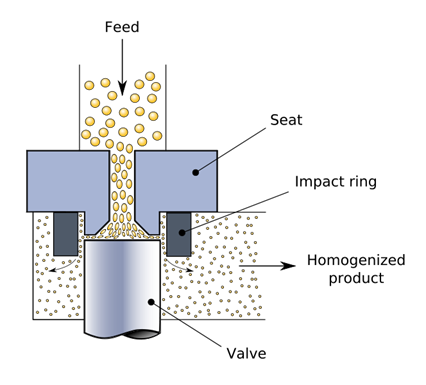
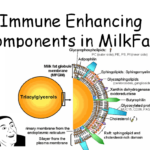
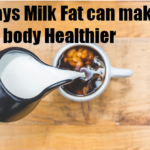


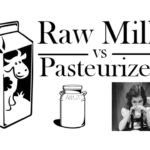
Dear Sir , Madam.
Hello
I am a doctor.
I read in many sites about the homogenized milk that causes arterosclerosis, heart disease, and diabetes.
Your site is the only one that I read that the homogenized milk is good.
If the God made the milk not to be homogenized who is it possible the man to make something that it is better than the God ?
Is it possible the man to make something better that the creator ( GOD ) who created the man ?
It is NOT POSSIBLE !!!
Dr. Panos.
Aww you have an excellent point! I don’t think man can create things better than God, all we can do is improve or enhance things. But if we are using this logic then why would a natural food produced by nature (milk) with the purpose of nourishing us (mammals) cause us to get heart disease and diabetes. What if it is the array of laboratory (man created) foods (soda, processed food, sugar, soy milk, ect.) that are harming our bodies. Good comment, thank you
If the way ‘God’ made things was so perfect, why are you using an electronic device and the internet? Shouldn’t you just be using your voice?
The metals in your electronics are all refined and altered to improve the properties. Plastics, used everywhere, are man made.
True. Don’t mess with Nature! How can something not made by nature be good?
Homogenization is man made with selfish interest of increasing shelf life of dairy products.
Say no to Homogenization.
The reason the dear Lord made milk with fat that separates, was so that early man could have cream as well as milk, and the cream can be made into butter. If milk came from the cow homogenized, people years ago would not have cream or butter. Homogenizing milk does not change the content in any way. No chemical has been added, and the human body can digest the fat in milk just as well in small particles as in large ones. Maybe better. Homogenized milk is certainly not a laboratory created food. It hasn’t been heated and nothing has been added.
The less digestibility is healthier for our bodies. I know my body does better with plain whole milk, not homogenized, non homogenized milk is healthier for me, though standard minimum pasteurization is fine. Raw is good also.
Some foods are best with some processing or cooking, but milk isn’t one of them, though pasteurization can be preferable for many cases.
You hit the nail on the head, Scott. I agree with you 100%! Just one point i’d like to make, and that is: non homogenized and pasteurized are one and the same thing. they are the closest thing to raw milk. I know because I grew up with non homogenized/pasteurized milk.
I like the great taste of homogenised milk, and it’s true, this milk is much easier to digest. I absolutely adore it.